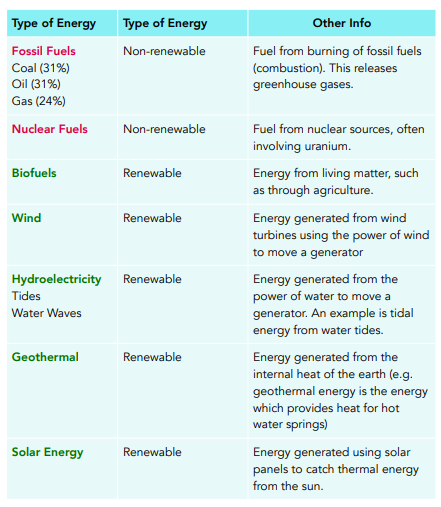Renewable Energy Sources (GCSE Physics)
Renewable Energy Sources
Energy Resources
The following table shows the main energy resources available for us to use on Earth.
The percentages show how much each resource contributes to our total energy usage. The resources without a percentage make up a very small amount of our overall energy usage. The types of energy resources can be split into non-renewable and renewable energy resources.


Renewable Energy Resources
- Renewable energy can be replenished. Renewable energy resources are replenished as they are used up (or they will be replenished later). One advantage of renewable energy is that we will never run out of these resources.
- Renewable energy doesn’t damage the environment. Another advantage of renewable energy resources is that they don’t cause much damage to the environment. This is much better than nonrenewable resources, which produce greenhouse gases that are quite harmful to the environment.
- Renewable energy isn’t very reliable. However, renewable energy resources are not always the most reliable forms of energy. As you can see from the table, a lot of renewable energy resources depend on the weather, such as the Sun, wind and waves. These are quite unpredictable, meaning that we might not always get a steady supply of energy when we need it.





Still got a question? Leave a comment
Leave a comment